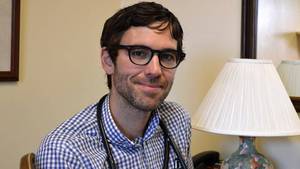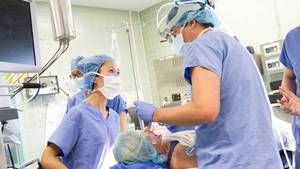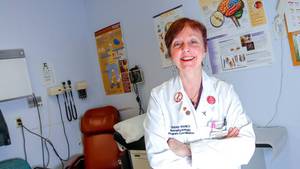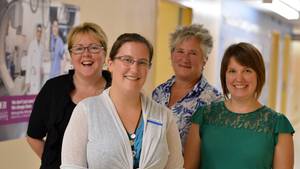Of the five human senses, vision is typically regarded as the most precious. For people suffering the effects of age-related macular degeneration (AMD), which affects 1.4 million Canadians and is the leading cause of vision loss in people over age 50, early diagnosis is critical in preventing and reducing vision loss.
“While there is no cure for AMD, there are treatment methods for some forms of it,” says Dr. Corey Smith. “We really need to develop ways of finding the markers of this disease early on.”
In April 2021, Dr. Smith assumed his new role as QEII Foundation Scholar in Retina Research with that long-term goal top of mind. Supported by funds that are permanently invested, QEII Foundation scholars are catalysts for change, conducting long-term research in a dedicated field.
“It’s actually quite rare to have a PhD researcher in a clinical department who does not have clinical duties,” Dr. Smith says. “This allows us to conduct dedicated research in the ophthalmology department.”
Dr. Smith’s research will progress with the collaboration of ophthalmologists and retinal specialists who encounter people with retinal diseases every day, but also researchers, support staff, trainees and patients. He says early detection, monitoring and development of new treatment are all areas where breakthroughs could potentially arise.
“We will be able to ask research questions based on clinical observations and hopefully come up with answers that help us better understand and treat these retinal diseases,” he adds.
With more than 20 clinicians and researchers — and patients referred from across the Atlantic provinces — the QEII’s ophthalmology department is renowned as a research centre. Department head Dr. Marcelo Nicolela says the new position will enhance the work of its retinal specialists.
“We are well known for our research on glaucoma, as well as in ocular genetics, pediatric ophthalmology and retina, but we want to build on that expertise and expand retina research, with more studies initiated here,” Dr. Nicolela says.
Dr. Smith will bring his expertise in medical imaging to bear on the two diseases most frequently encountered by retinal specialists: age-related macular degeneration and diabetic retinopathy.
“Imaging plays a huge role in ophthalmology,” Dr. Smith explains. “Being able to image the retinal tissue of the eye to see what is happening inside is an important part of patient care.”
Optical coherence tomography (OCT) is a non-invasive imaging procedure in which the eye is scanned by light, with the captured images allowing physicians to view the different layers of the retina, the thin tissue at the back of the eye. Imaging technology is constantly evolving and improving, Dr. Smith points out.
“New devices and ways to acquire images are constantly being developed. Now we can actually see blood flow in the eye, without any invasive procedure.”
The question Dr. Smith will be looking to answer will look at determining how these images can best be used. For example, images can now be acquired in three dimensions, but the traditional methods of interpreting those images are still mostly based on just two dimensions.
“That’s for a variety of reasons — it’s computationally faster to look at just two-dimensional slices,” he says. “But these diseases happen in three dimensions, and so maybe we’re missing something by not using those images to their full potential.”
Dr. Smith says developing tools and software for analyzing images in three dimensions will be breaking new ground.
“There have been some research papers on this subject, but not a lot that has been made available for clinical use,” he says.
The value of obtaining three-dimensional data will increase significantly as the use of artificial intelligence (AI) becomes more prevalent in medicine, he adds.
“Artificial intelligence is not my area of expertise, but it’s not inconceivable that one day AI will be used to help guide patient care. This is why collaboration is so important in research.”
As imaging technology continues to evolve, it will offer great potential for understanding retinal diseases and their progression, Dr. Nicolela adds.
“At the end of the day it’s about bringing benefits to patients and improving patient care.”








